#North Kona
Text
what if i tried to find the exact villa jojolands is currently taking place in
#it’s obviously based on a real place#and i know that area pretty well#from the manga i can deduce it is north of the kona airport (panel showed mauna loa to the right of their car)#and its beachside of the main road (no villas in that area mountainside)#and it’s a private villa so it isn’t something in the tourist towns#jjba
22 notes
·
View notes
Text
Thursday, May 30. World's largest pair o' boots at North Star Mall in San Antonio, Texas.








Above: Sushi at Kona Grill.
2 notes
·
View notes
Photo
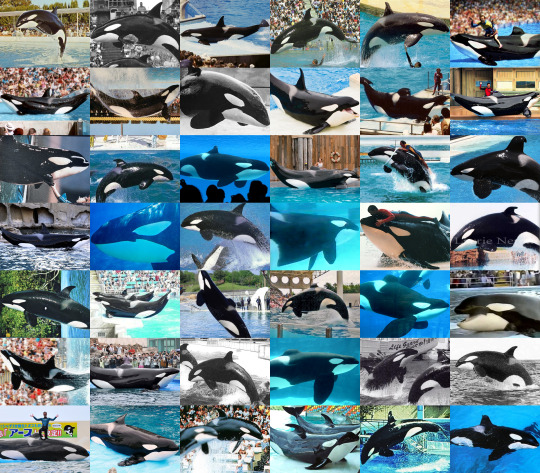

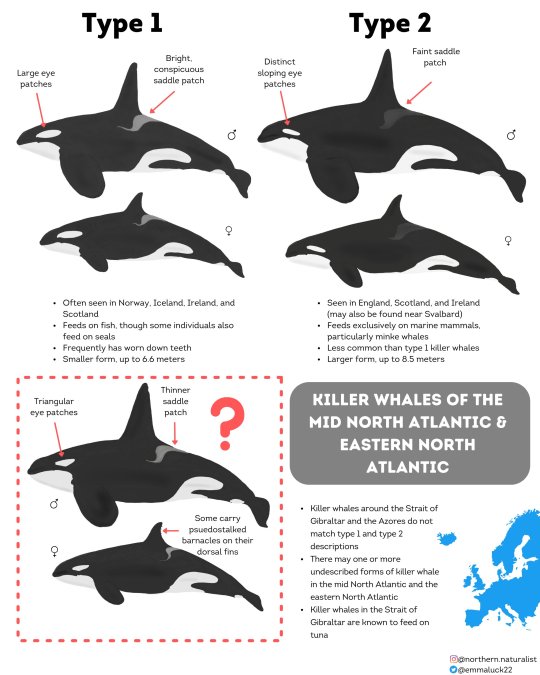
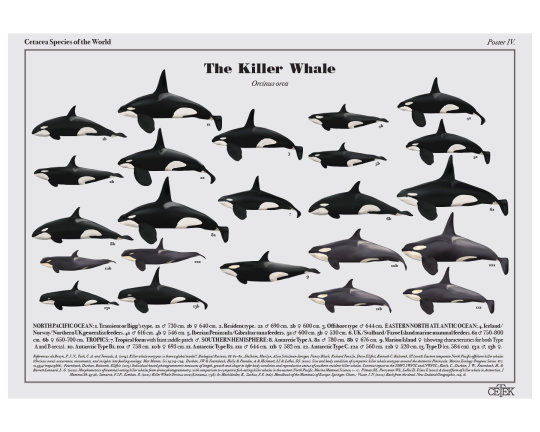

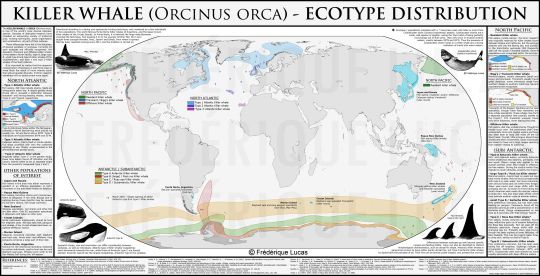
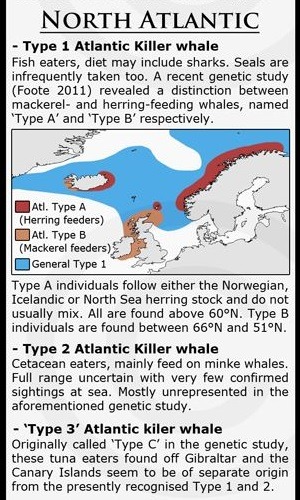
Icelandic whales and ecotype
I’ve seen some claims going around that the Icelandic whales displayed in zoos and aquariums for the past several decades are actually two different ecotypes, with some being “North Atlantic type 1″ and a few others being “North Atlantic type 2″.
I think this is completely wrong, and will show you why.
Above are an assortment of ecotype infographics.
As you can see, “type 1″ are the typical whale you’ll find off Iceland and Norway. They eat mainly herring and other small fish (though some individuals have been observed taking seals), and males typically range from 6.2-6.6 meters, females, around 5.5 meters.
They have clear saddlepatches, and tend to have eyepatches like this:

As the closeup of the map image (last image in the collection above) shows, “type 1″ orcas are also in turn split into type A and B. Type “1A”, if you will, follow exactly the range of where Icelandic whales were caught, and along the Norwegian coast (this eyepatch collage is of both Icelandic and Norwegian whales).
As all the other ecotype infographics show, “type 1″ live off Iceland, Norway, with a couple pointing out that they may range as far south as Scotland and Ireland.
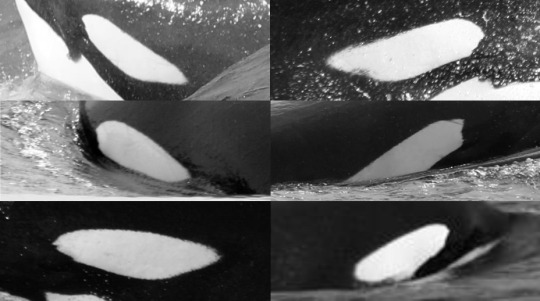
“Type 2″ on the other hand, is huge, one of the largest killer whales anywhere on Earth (after Antarctic type A). Males are 7.5-8.5 meters long, females 6.5-7 meters. They have distinctive downwards sloping eyepatches (like sad eyebrows, seen above), faint saddlepatches, are are very rarely seen, range around Britain, Ireland, the Faroes, and occasionally as far as Svalbard - not Iceland or Norway. They are mammal-eaters, specializing in minke whales as prey. Today, only a few of them remain.
The claim is then, that some of our Icelanders in human care are secretly, actually, type 2.
Let’s look at them. I have gathered all the whales caught in Iceland into a large collage, here split for ease of viewing. The only named whales I couldn’t get good enough images of were Canuck 2, Magnus and Benkei 2.
If the whale is still alive or died as an adult, I will provide measurements, if known.
I originally wrote descriptions for all the following whales, but it got tiring, repetitive, and too lengthy.

Kim, Gudrun, Kenau, Kandu 5, Hoi Wai, Kona 2, Winnie, Betty, Kahana, and Kasatka.
All of very typical “type 1″ looks.
Kim
Gudrun has no measurements available, but as can be seen when she lived at SeaWorld as a full-grown female, she was not large.
Kenau was caught with Gudrun. She was 5.5 meters long when she died at age 16.
Kandu 5. Interestingly, Orkid is the only whale in human care who has anything like the type 2 eyepatch, but she’s the daughter of Kandu who does not, and a Northern resident (Canadian) father who also did not. Kandu measured under 5.4 meters when she died.
Hoi Wai
Kona 2 was likely caught with Kandu 5, had enormous, distinct eyepatches, and she was 5.5 meters long at the time of death.
Winnie was caught with Hoi Wai as said, had a typical Icelandic eyepatch, and the same size and shape as other Icelandic females she lived with.
Betty was caught along with Katina, so they were likely pod mates.
Kahana was caught with Kasatka. She was particularly petite, measuring barely 5.1 meters when she died aged 15.
Kasatka was a mere 5.2 meters long, and looks nothing like a type 2 whale.

Shawn
Kotar was 17-18 years old when he died, and measured 6.4 meters at the time of his death.
Katina is a typical, squat and stocky Icelandic whale with large eyepatches. She is just barely 5.5 meters long.
Dzul-ha
Caren was just 10-11 years old when she died, and measured 5 meters long.
Kiska was a larger female at 6 meters. Large for a type 1, but nowhere near the 6.5-7 meter type 2 females.
Keiko was an average-sized type 1 male at about 6.4 meters.
King
Ulises is another average-sized type 1 male, at 6.4 meters.
Bjossa is another I can find no measurements of, but she was much smaller than Corky, who is 6.1 meters (a Northern resident). She looks typical of an Icelandic whale if a bit long. Looking at the top middle whale of my eyepatch collage, that whale looks just like Bjossa.

Finna was caught along with Ulises, Bjossa and Vigga, his pod mates.
Vigga was another stocky and short female with large eyepatches, notably smaller than her 6 meter Northern resident companion.
Nemo
Neptune
Ruka
Noni/Nootka was stocky and large female, at 6 meters, but with a bright saddle and eyepatches so commonly seen among Icelandic and Norwegian herring-eaters.
Freya was the only adult I could find who had a truly faint saddle patch (note that juveniles of all ecotypes tend to have faint saddles). She was also very long and slender compared to the typical, more stocky Icelandic female. She was however caught along with Kim 2 and Haida 2, and measured 6 meters in her late 20s. Her eyepatch is not type 2.
Haida 2 was, unlike her likely pod mate Freya, very typical in appearance for a type 1. She measured 5.2 meters at the age of 13.
Kim 2 was reportedly a large male, at 6.9 meters, just under Tilikum in size.
Nootka 4 (strange designation since she was caught one year after “Nootka 5″) was the same size as Haida.

Tilikum was the largest Icelandic killer whale in human care, reportedly at just under 7 meters, though I have also seen 6.7 meters (in 2016, shortly before his death). Even if he was 6.9 meters, that is indeed large for a type 1, but absolutely minute for a type 2, and he looks nothing like them.
Nandu
Samoa was 5.15 meters long when she died, with a clear type 1 eyepatch and saddle patch.
Junior
Bingo had interesting triangular eyepatches and a black line in his saddle, and measured 6.5 meters in his early 30s.
Patty
Kandu 7
Prince
Maggie
Oscar was an unusually small male, measuring only 5.8 meters at the age of 26.

Stella is very small, only around 5.2 meters long.
Ai
Ran
Sharkane
Tanouk measured 6.4 meters in his teens (meaning he would grow larger for a few years).
So that’s all of them, except for Canuck 2, Magnus, and Benkei 2.
Then, there is this:
You can stop calling North Atlantic killer whales type 1 and type 2
“The main issue with type 2 killer whales came from the small sample size (5 individuals)”
“In the meantime, Dr. Foote suggested we just drop the “type 1/type 2” classification for now.”
There is simply no basis to think any of the above 45 whales from Iceland are or were the “type 2″ whales, like John Coe.
56 notes
·
View notes
Text
Chapter 218 Trivia (Part 1)
The final crafting project already!? :(
(I know it's only for the moon mission groundwork, but… The end is nigh.)

Gen's excited for Twitter to come back, but I think Senku is too. It was a major source of data for him before the first petrification happened.



The oysters are here because Hiroshima is Japan's largest oyster-producing region. They're most well-known for their pacific oysters (Crassostrea gigas), specifically the Hiroshima variety.



Eucommia ulmiodes, commonly known as the hardy rubber tree, is native to China and features as one of the 50 fundamental herbs in Chinese herbology. It does well in a wide range of environments, & can handle colder weather than other rubber trees, but is nigh-extinct in the wild.


As Chelsea says, the tree is resistant to pests and disease, and fossils of Eucommia have been found in Europe and North America.
Unfortunately, the oldest fossils of Eucommia are from the Cenozoic period, the era after dinosaurs.


Unlike the rubber trees the KoS found in South America and Indonesia, most of the latex in Eucommia is found in the leaves, not the trunk. This makes it harder to harvest, and is probably why Senku needed to travel elsewhere for a better source.
The cables are a simplified version of current submarine cables, though there's many versions of them.
The modern boats are also designed the same, with large spools of cable getting unwound off the back. The buoys on the cable are only necessary in shallow waters.




We have the beginnings of a coffee shop turf war: Xenobucks versus Francoisbucks.
(If anyone draws mermaid Francois please share!)
Also, Francois' gorgeous filigree table travels with them!



Coffee isn't native to Hawaii, but it was brought over in the early 19th century to create Kona coffee, one of the most expensive coffees in the world.
A coffee market crash in 1899 brought Japanese workers over to Hawaii to work on the plantations.


For the last several chapters, Senku's been talking about how difficult it is to make a semiconductor, and how it'll take at least 5-10 years to do, so they have to use parametrons instead.
Well he's here holding a transistor, which needs semiconductors. Congratulations?


Modern transistors, if they're reliable enough, are used on submarine cables to boost the signal. Since everything in Dr. Stone so far has been remarkably reliable, it's fair to assume they used them.
This logo is a parody of General Electric (Xeno Electric?), a very large American conglomerate that primarily focuses on aviation, power, renewable energy, and digital industry.


(Next part)
16 notes
·
View notes
Text
Date: August 6th, 2024.
Location: North Kona Coast, Hawaii.
Starter for: @havenbsinclair
Hawaii had been a destination he'd been looking forwards to. He knew that Haven had been bummed, if not upset about the fact that Lake decided he wanted to go camping with his father rather than going with his mother. Still, he wanted to make sure that she would have the best time that she possibly could. A vacation that she would remember for the rest of her life, something worth remembering. So after they had acclimatised to Hawaii, he'd taken her on a day out. A massage to wake up in the morning, attending a Luau to get acquainted with the Hawaiian culture and when the sun had set after their dinner, he'd driven them down to the North Kona Coast in their rented jute. He wasn't going to spoil the last surprise and had her blindfolded upon exiting the vehicle, carrying her on his back so she wouldn't have to walk on the sand by herself whilst not being able to see where she was going. Upon setting her down he turned her around, taking off the blindfold. "I need you to wait here, okay? Gotta set up some last moment things." He instructed her, his voice carrying over the waves lapping against the shore. He walked to the area behind her, where what he was doing was unheard over the waves. But it didn't take long before he was back, hands rubbing together as he looked back at the scene he created. A small wooden platform in the middle of the beach, covered with pillows, blankets. Orange juice to quench their thirst, fruit to serve as a dessert after their dinner, and candles next to the platform all around, and torches having led down the path they just walked down on. "Okay, turn around."

2 notes
·
View notes
Text
Intro
Gravel riding had become much more popular over the past few years. The clear advantage is getting off busy roads and onto less traveled, often out of the way, dirt/gravel and single track routes. Several of our riding friends who also enjoy bike touring started looking at bike packing on gravel as an alternative. Somehow, a group of us with ties to past cross-country rides decided that we’d enjoy doing a multi-day bike packing trip together out West. And with that, commitments were made nine months in advance of this trip.
The crew includes Steve (that’s me), David, Ed, and Jose. Cumulatively, we have about 6 months of bike touring between us. Our touring miles probably exceed 7,500. However, for all of us, bike packing is a new thing. As of right now, two of us have tried it. I’ve got 4 days and 160 miles in the saddle and Jose has 2 days and 75 miles under his belt. We are all riding bikes with which we’ve never done extensive trips. As a matter of fact, all of our bicycles are new. Regardless, we’ve done our research and we are prepared for some high adventure.
So what are we riding you ask… I’ve got a Surly Ogre with a Moloko handlebar. All steel. 29 inch wheels. David is riding a Kona Unit X with a flatbar handlebar. Also steel on 29 inch wheels. Ed and Jose will be riding true gravel rigs with Salsa Cutthroats. Carbon. Drop bar handlebars. None of the bikes have suspension. It’s going to be interesting to compare bikes along the way!
Our gear will be carried in a variety of bags connected to our handlebars, forks, frames, and rear racks. Like previous trips we will carry all that we need, we hope. We’re self supported so we���ll have tents and sleeping bags, food and stoves, water purifiers, basic tools and parts for in field repairs, and clothing necessary to protect us from the elements.
The weather could vary greatly. We need to be ready for hot and cold as well as rain and snow. Fires have already been an issue to the north of our start so smoke could be a problem. Detours due to forest fires are also a possibility.
I’m sure you’re wondering where we are going. One of the most notable routes for gravel riding is the Great Divide Mountain Bike Route. It runs ~2700 miles between Banff, Alberta to Antelope Wells, New Mexico. We are going to do the first 550 miles. We will start in Banff and head south. Ten days later, we will head west at Seeley Lake leaving the official route for our finish in Missoula on Day 11 or so.
We expect to camp most nights. Often times it will be primitive camping (think no toilets or potable water) in the wilderness. For two days we will be riding the Flathead alternative route in British Columbia known as the Serengeti of North America for its abundant wildlife and remoteness. Other days we may have no services (groceries, etc.) or very limited services. Our mid-trip rest day will probably be in Whitefish, MT where we can enjoy some r&r, assuming we can find hotel with vacancies.
All along the way we will get great views of the Rockies, crossing the continental divide multiple times. We will also pass through several small towns, some will be touristy this time of year while others will be more resource extraction-focused (coal, logging, quarries, etc.). Alberta, British Columbia, and Montana all have great natural beauty and significant exploitable natural resources.
With that… wish us luck!
9 notes
·
View notes
Text
#20412345? Consistency? What's that?
When going through medical stuff, you get weighed a lot - it's very standard. Which is something I have tried to ignore 'cos of depressive issues and general body loathing etc but can't help but notice. (I still refuse to have an ED but fuck is it hard work some days.)
Queen's North hospital scales have had me from 113-115 usually but up to 118 when full of steroids from chemo. The hospital in Kona - even after the steroids are all gone and I'm back to normal - has logged me in consistantly between 116 to 118.5. Kona's last log was '115.6, we'll call it 116'. The next day, Queen's logged me at 113.5.
They use the same model of scales in each hospital and I have been weighed on different machines in each place, so it's not one faulty set of scales... I'm rubbish at physics and electronics, but I'm guessing the significant change in elevation, pressuse, and humidity between Waimea and Kona plays a significant part.
Look, my dearest bitches, (I'm definitely 100% my undearest bitch, but hey) really what I mean is if you have to be weighed rather a lot for doctor's appointments and medical charts, and weight is a bit of an issue for you... just, IDK, put it in a different mental catagory like 'Medical Bullshit Info' or something.
It is utter bullshit anyway. I felt sad and blah and puffy and fat after all the steroids. And because my neurons are idiots, this made them sadly-fox-ears. Then before radiation I had a checkup at Queen's and at Kona: Queen's logged me as 113.5, Kona at 118.3. Somehow I gained five pounds between hospitals in the same afternoon. I was elated, I was devestated, I gave myself a stern fucking talking to about caring about that sort of shit.
3 notes
·
View notes
Text

Liste de mes cartes et de mes recherches MàJ le : 21/10/2023
Gold : / (Recherche Jewel, Magic, Stella, Hunter et Joker)
Silver : / (Starlight, Bella, Jewel, Twins)
Copper : / (Fiona, Friends forever, Jewel, Safire, Silas et Zargo)
Wise Warrior : Sorel, Raimondo (Cantaro, Djengis, Rubin, Medusa, Calato, Prince, Sun, Yasmin)
First Series : Shadow (Starfighter, Sunny, Bella, Fiona, Jewel)
Second Series : Toute les cartes basiques, toute les promos (Apuni, Sunny)
Northern Light : Balto, Conall, Star, Embarr, Lakehorse, Colour, Bella (Donn, Yasmin, Jewel, Fiona, Froya)
Mythologie/Ancient Light : Toutes (sauf Yasmin, Apollo, Balto, Bello, Fiona 68, An.Light Promo Serenity, Mirth, Generosity, Dreamer)
Lueurs Boréales : Toutes (sauf Bella, Chumash, Lakota, Chitimacha, Isleta, Miccosukee, Muscogee, Pauma, P1 à P11 et PS1)
Amis Magiques : Toutes (sauf Ceratos, Chitra, Cindra, Cioccola, Cordelia, Fiona, Giasa, Lillova, Madeja, Merowyn, Ondine, Petri, Savros, Thunder, Zephan P1, P2, P3, P4)
Baby Bella : Aegis, Amor/Venus, Apollo/Athena, Delight, Farfalla, Helia, Iceking/Nyx, Iceprince, Khrysor, Leonardo/Sarah, Mira, Moonbeam, Moonphantom, Moonsprite, Bellerophon, Pythia, Sunbeam, Addis, Bella, Bello/Bella, Beran/Rosebriar, Chromasia, Chryso/Sasha, Cirra, Embarr/Freja, Flame/Nike, Jewel, Mistral, Pavonne, Pegasus/Roxy, Summit, Wodan, Rimfaxe/Aurora (recherche toute les autres)
Trésors Fabuleux : Toutes (Sauf Sophie, Thunder, Starstone, P2 Lily)
Familles Royales : Toutes (Sauf Alina, Gracie, Spottie, Zephyros, P2 River)
Bal de Bella : Toutes les basiques, toutes les promos.
Sunflowers : Toutes les basiques et toutes les promos (Bella/Sara McDonald)
Moonfairies : Toutes les basiques et P1 Twilight (Sauf Anthea, P2 Woodlock)
Starlights : Toutes les basiques, P1 Daybreak (sauf P2 Odyssey)
Carnaval de Printemps : Toutes (sauf La Fanfare, P1 Honora, P2 Kona)
Summer Camp : Monument Bello & Bella, Monument Jewel, Monument Fiona, Esprit Volcan endormis, Esprit Volcan éveillé, Lightning, Ruskin, Ivenna/Myrfor, Esprits de l'été, Bella et Sara, Emma, Addis, Histoire feu de camps, Shamal, Ponderosa, Wildflower, Farah (recherche tout le reste + les promos)
Winter Festival : Elemyn, Frostfire, Gracie, Noel, Sleetmane, Starunna, Tinsel, Mistletoe et Holly, Silver, Esprit du Fjord, Jewel, Fiona, Chocolat des fées, Tannenbaum, Snowhorse (recherche tout + les promos)
Best of Bella Sara : Toutes (sauf P1 Cordelia et P2 Faxon)
Chibis Magiques : Toutes (recherche Ivenna, Myrfor, Pantheon, Mireldis, Snowdreamer et Starlight FR)
Herds of North of North : Ivenna et Myrfor, Styginmoor Castle, Colour, Feywind Castle, Parthamane Castle, Petalhome Castle, Valeryk Castle, Wildscape Castle, Mustang, Shanti, Fiona, Saturna, Starlight, Pantheon (recherche tout + promos P1, P2)
Promos des jeux, puzzle, peluches : / (recherche les 12)
Peluches, jouets, chibis bracelets : Fiona et Coral chibis (recherche peluche Fiona et Jewel, jouets divers Nyx et Iceprince, Fiona, Osage, Jewel, Mireldis et Moonphantom, Uranus, Valkrist, les poulains Moonbeam et Sunbeam chibis Pantheon et Jewel)
Mini figurines : Inupiat, Phoenix, Athena, Anemone, Misla, Fiona, Potawatomi, Kallista (recherche Seraphia, Walter, Amor, Colour, Apollo, Wasco, Rosebriar, Obrylin, Jewel, Osage, Pink Lady, Blossom, Venus, Chromasia)

2 notes
·
View notes
Text
A reciprocal relationship with the land in Hawaiʻi
Through community-based research with organizations that work to “hoʻomomona hou i ka ʻāina,” or “restore that which feeds back to abundance,” PhD student Aja Grande has embarked on a healing journey of her own.
Laura Rosado | MIT News correspondent
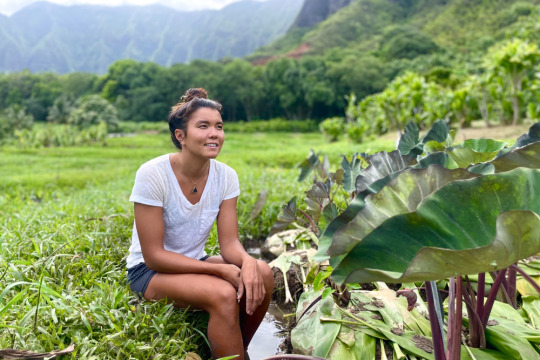
Aja Grande grew up on the Hawaiian island of Oʻahu, between the Kona and ʻEwa districts, nurtured by her community and the natural environment. Her family has lived in Hawaiʻi for generations; while she is not “Kanaka ʻŌiwi,” of native Hawaiian descent, she is proud to trace her family’s history to the time of the Hawaiian Kingdom in the 19th century. Grande is now a PhD candidate in MIT’s HASTS (History, Anthropology, Science, Technology and Society) program, and part of her dissertation tracks how Hawaiian culture and people’s relationship with the land has evolved throughout time.
“The fondest memories I have are camping on the north shore every summer with my friends,” says Grande. “I loved being in ‘ke kai’ (the sea) and ‘ma uka,’ (inland, in the mountains) with my friends when I was younger. It was just pure fun exploring ‘ʻāina’ like that.” “‘Āina” in the Hawaiian language is often defined as “land,” but is understood to the people of Hawaiʻi as “that which feeds.”
“Now that I’m older,” Grande adds, “I’m connecting the dots and realizing how much knowledge about the complex systems of ‘ahupuaʻa’ [traditional Hawaiian divisions of land that extend from the mountains to the sea], I actually gained through these experiences.”
Grande recently completed a year of fieldwork in Hawaiʻi where she volunteered with land-based, or ‘āina-basedorganizations. In the movement to restore ‘āinato “momona,” or “fertile and abundant lands,” the land and the people who serve as its stewards are of equal importance.
“I’m looking at how people who are not Kanaka ‘Ōiwi, or native Hawaiian, by descent can participate in this kind of restoration, and what it means for both Kanaka ‘Ōiwi and non-Kanaka ‘Ōiwi to participate in it,” says Grande, who herself descends from immigrants of other island nations. “Some of my ancestors were born and raised in Hawaiʻi before the U.S. subjected Hawaiʻi as a state and territory, meaning that some of them were Hawaiian Kingdom subjects. While, I am not Kanaka ʻŌiwi by lineage, some of my ‘ohana nui (extended family), from these same ancestors, are Kanaka ʻŌiwi. I’m writing about how being Hawaiian, from a Hawaiian sovereignty standpoint, is not just about race and ethnicity. When Hawaiʻi was a sovereign nation, Hawaiian citizenship was never afforded on the basis of race alone. It was also based on your lifelong commitment to ‘āina and the people of Hawaiʻi.”
The project is personal to Grande, who describes both the content and the process of writing it as part of her healing journey. She hopes to lay the groundwork for others who are “hoaʻāina,” or “those who actively care for ʻāina,” in Hawaiʻi, but not Kanaka ʻŌiwi to better articulate their identities and foster a deeper connection with the ʻāina and the “kaiāulu,” or “community,” they love and actively care for.
Returning home
Grande has spent her academic career on the East Coast, first at Brown University, where she received a degree in science, technology, and society, and now at MIT in the HASTS program. She swam competitively through her second year of college, and had earlier represented Hawaiʻi at the 2012 Oceania Games in New Caledonia. Once she stopped swimming, Grande first used her newfound time to travel the world. Tired of this transient lifestyle, she realized she was more interested in exploring her connection to land in a more rooted way.
“Moving around, especially as a college student, it’s very hard to grow things,” says Grande. “People are a lot like plants. You really just need to let plants do their thing in place. We do really well and we thrive when we can be connected to place.”
Grande started by founding the Ethnobotany Society at Brown to explore the relationship people have to plants. With the group she organized nature walks, collaborated with local farms, and connected it to the history she was learning in class.
Still, the East Coast never quite felt like home to Grande. When she started planning for the fieldwork portion of her program, she envisioned spending half the year in New England and half in Hawaiʻi. But she soon realized how important it was for both her research and herself to dedicate everything to Hawai’i.
“When I came back, it just felt so right to be back home,” says Grande. “The feeling in your naʻau — your ‘gut’ — of knowing that you have to contribute to Hawaiʻi is very powerful, and I think a lot of people here understand what that means. It’s kind of like a calling.”
Keep reading.
Make sure to follow us on Tumblr!
2 notes
·
View notes
Text
Rescue Mission Success!

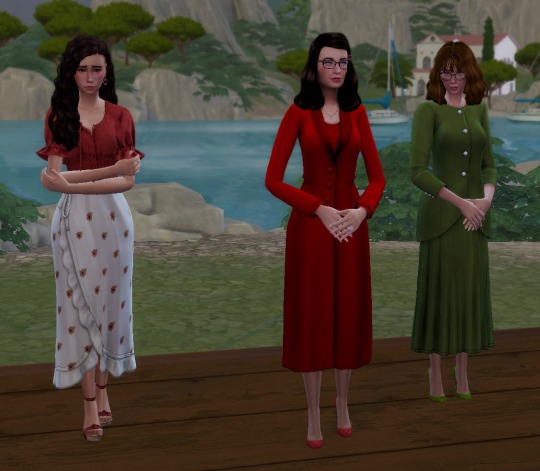
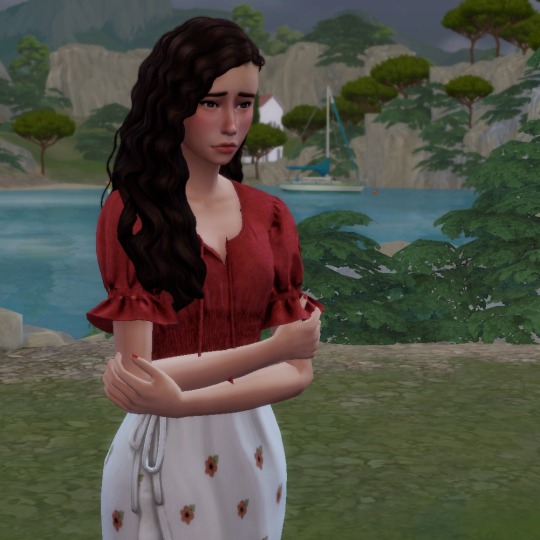
Around 3am this morning, Imperial cars pulled up to the docks in Evergreen Harbor, and unloaded HIM Tsarina Ekaterina, Queen Misha, and Misha's niece, Princess Malie of Sulani. The trio lined up on the presentation deck before the sun had even risen, to watch the SS Britechester pull into harbor.
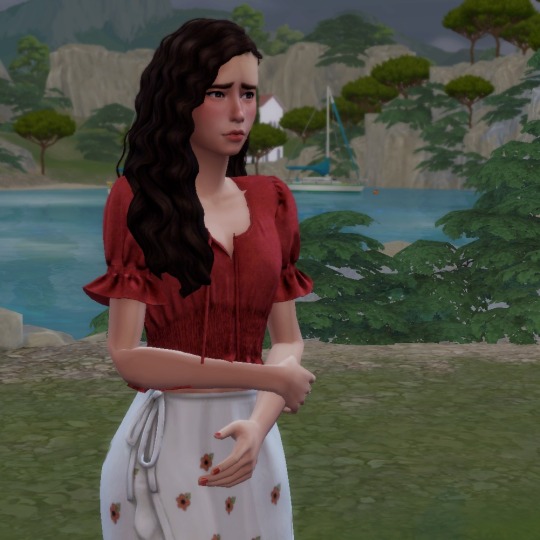
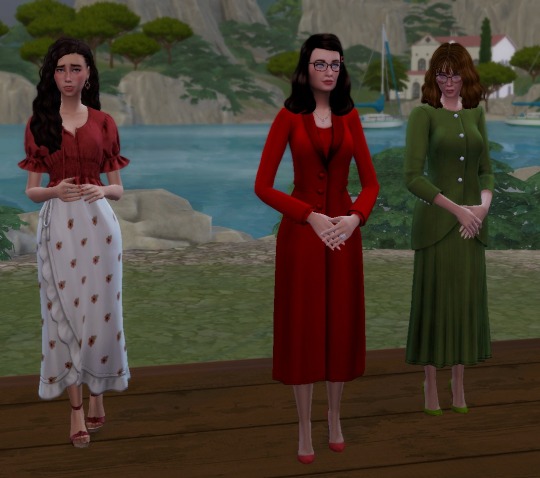
The SS Britechester is the official ship of HIH Crown Princess Ophelia's secret mission troops, the Britechester Brigade, who were sent off on an unknown mission early last week- unknown until today, that is.
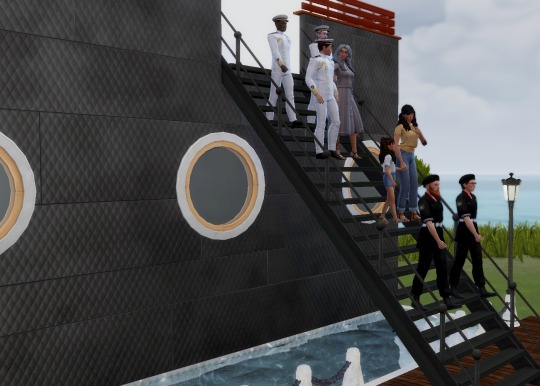
Now that the Brigade has returned successfully, mission details have been released: apparently the troops were sent in to rescue Chief Lilah, Queen Mother Kona, and Princess Allinah Mahoe from occupation in the Sulani Islands. The Imperial War Council deemed their allies in Sulani the most at risk from retaliation from Windenburg, and swooped in undercover and in the middle of the night to rescue them from their house arrest imposed by the Emperor's daughter, Crown Princess Martha.


Not only was the Sulani Royal Family rescued successfully, but there was no loss of life amongst the members of the Britechester Brigade- a welcome relief to our own Imperial family who has many members amongst their ranks.

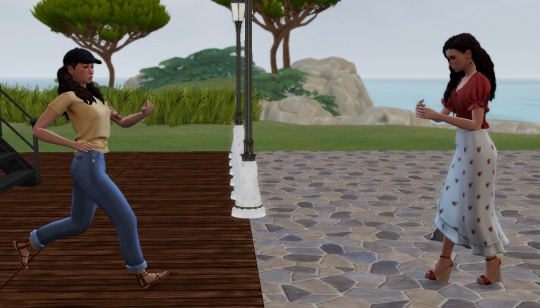
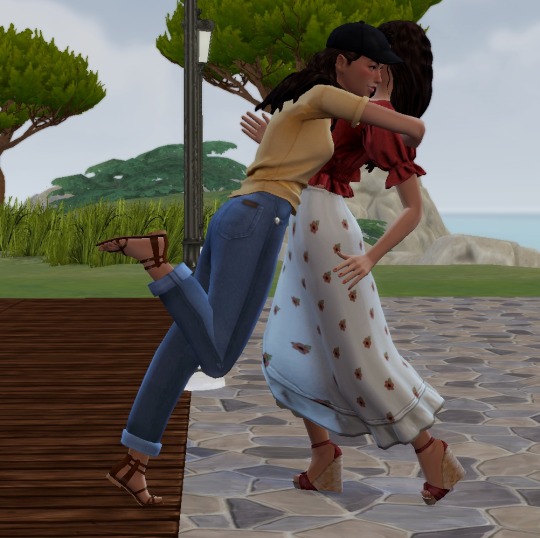

It was an emotional reunion for the Chief and her eldest daughter, Princess Malie, who has been estranged from her mother since the war started. Princess Malie was attending Ivanov Royal Academy in Glimmerbrooke when Sulani was seized by Emperor Victor. The Chief was still under occupation when Princess Malie graduated from the Academy, and when she subsequently started university in Britechester. It's been over a year since Mother and Daughter have seen each other.


Tsarina Ekaterina has designated Cobblemore Cottage, a large manor house owned by the crown in the town square of Henford, as the headquarters for the Sulani Government in exile. Once all reunions had taken place, and HIM congratulated the Britechester Officers, the Sulani Royal family was loaded into the Imperial cars, and began their drive North to Henford-on-Bagley.
#tw: war#tw: refugees#ivanov legacy#ts4#ts4 simblr#ts4 legacy#tsarina ekaterina#queen misha#princess malie#chief lilah#queen mother kona#princess allinah
2 notes
·
View notes
Text
-- Summer Vacation ‘23: Fiore Exploration (8)

It’d be the next morning that Kianga arrived first with Ruko and Blue (?) in tow. Grusha would follow later after a shared breakfast between the three. Saving some for the ice-type specialist, Ashe offered it to her cousin to eat on the way. They’d have to traverse through Panula Cave and head north if they wanted to reach Wintown. They had a few days left before they needed to be on their way to the next region, so they’d use that time to its fullest.
With Kianga scouting ahead with Lavender who lit the way using Flash, the group traversed the caves well and good into the early afternoon until they came across the exit to North Road. There was a slight chill in the air, making it feel like Spring more then Summer. Thankful for it, Grusha and Ashe seemed to relax and although neither felt their best, they still pressed on. It would be by nightfall they reached Wintown and after reaching the inn and getting a room for them all, it was off to dinner at a local place.
The cool atmosphere had Ashe and Grusha out beyond bedtime and gave them a chance to cool off and heal, but Leon and Kianga were quick to find sleep in their rooms. It was then as Ashe and Grusha walked along the main street with Lolair and Logan that Ashe asked if Grusha had made any progress with his training. Revealing that, while yes, he was starting to get a idea of things, he still needed time and practice and in the heat he didn’t feel his best. He would sooner do better in icy waters then warm waters, but he had agreed to give this a try and he wasn’t a quitter.
With that said, the two headed back to the inn and sleep soon found them, and thankfully, no heat to wake anyone up following.
@pokemon-experiments
---
Panula Cave, Fiore -> TRAVELING -> Wintown, Fiore !!
Ashe Team: Sylveon (Lucky), Lapras (Loch), Liepard (Logan).
Leon Team: Decidueye (Alola/Celeste), Corviknight (Mordred), Gyarados* (Vivian).
Kianga Team: Espeon (Lavender).
Grusha Team: Weavile (Lolair), Eevee (Ezio), Mantine* (Kona), Wooloo (’Hope’/on loan).
2 notes
·
View notes
Photo

The Pleiades, an open star cluster in the shoulder of the constellation Taurus, is known to the kilo hōkū, the Hawaiian astronomer, by several names: Ka Huihui a Makali`i (The cluster of Makali`i), Huihui kōkō a Makali`i Kau i Luna (The Net Cluster of Makali`i Hung Above), Nā Kā a Makali`i (The Bailer of Makali`i), Nā kōkō a Makali`i (The Net of Makali`i), Nā Wahine a Makali`i (The Wives of Makali`i), Ke Aweawe Makali`i (The Makali`i Stars Stuck Together), Ka Lālani a Makali`i (The Makali`i Line), Huihui (Cluster, Group), and Kūpuku (Clustered).
In some traditions, the Pleiades is also called Makali`i, but there are also traditions which give that name to Aldebaran.What does such an abundance of names tell us? First, it tells us that the star, planet, or group of stars is very important to a lot of people. The Pleiades is important to the traveler as a navigational feature. The variety of names indicates, I believe, the altitude and angle of the cluster, critical information to a navigator.
One translation for Makali`i is “Eyes of the Chief,” and that was the name of the head navigator of Hawai`iloa, a great voyaging chief. If we look at the cluster when it is first rising above the horizon, it could look a bit like a woman standing upright. Or, perhaps it is a group of women, Nā Wahine a Makali`i. In either case, soon the sail of the husband’s canoe comes into sight, and Makali`i (Aldebaran), the navigator, sails into view. What better reason to journey forth than to find a wife? As the cluster rises overhead, the stars begin to look like a bailer, an important commodity, indeed, for those who spend their lives on the sea. In fact, a number of Polynesian legends center on magical women who take the form of a beautifully carved bailer floating in the ocean. Caught and courted by the right man, the bailer becomes a beautiful woman who agrees to marry him. And so the Makali`i line continues down to the sea. Makali`i and his wives rise a bit north of due east, and pass directly overhead on their way to the sea, where they will set to the south of due west.
For the traditional farmer, on the Island of Hawai`i, the November 17 rising of the Pleiades marks the approximate start of the rainy season. Makali`i was not only a great navigator and steersman, but also an agronomist, an expert farmer. Indeed, we find that around the world, the Pleides is associated with farming. In Hawai`i, the evening rising of those stars is associated with the return of the all-important rainy season.
Other chiefs also have had the name “Makali`i. Among them is the father of Kamapua`a, the pig demi-god, also associated with rain and fertility. At the other end of the spectrum is a greedy Chief Makali`i, who figures in a story from the Kona coast of Hawai`i Island. In this story, Makali`i is translated as “tiny eyes,” a euphamism for “greedy,” and refers to a greedy chief who taxed the people into poverty during a drought. In this story, `Iole, the Hawaiian rat, saved the people from starvation by chewing through Huihui kōkō a Makali`i Kau i Luna. The net burst open, and all the food which the evil Chief Makali`i had placed in it fell back to earth.
Hidden within this story may be a record of the extreme El Nino conditions of 1640. But whatever historical events may be encoded into the story, for myself, when the net hangs over the western sea, I enjoy thinking of Aldeberan as the right ear of `Iole, ε Tauri as his left ear, θ1 and δ his eyes, and γ Tauri his pointy little nose. His body is to my left, and Orion’s bow makes his tail. If I look closely at the Pleiades, which `Iole also is eyeing, I see where our heroic little rat bit through the net so the food could fall to earth and feed all the people there.
3 notes
·
View notes
Text
Organic Coffee Market - Forecast (2022-2027)
Organic Coffee Market size is estimated to reach $13.4 billion by 2027, growing at a CAGR of 8.3% during the forecast period 2022-2027. Coffee is one of the most popular beverages in the world, and the coffee bean is the second most traded commodity after petrol on the worldwide market. In more than 50 nations, more than 25 million farmers are involved in the production of coffee. Organic coffee is a popular beverage made without synthetic chemicals, pesticides, organic fertilizers, antibiotics, or growth hormones. Chlorogenic acid, fatty acids, flavanols, and catechins are amidst the numerous antioxidants discovered in them. The coffee beans utilized in the manufacturing of organic coffee are non-genetically modified organisms. Sustainability, renewable resources, and safeguarding the quality of the land, groundwater, and air are all priorities for the producers. Organic coffee has exploded in popularity in recent years, thanks to a shift in consumer preferences toward natural foods and sustainable lifestyles. One of the primary reasons driving market expansion is growing awareness of the advantages of organic foods and drinks throughout the world. Organic coffee has been shown to lessen cancer risk, lower cholesterol levels, increase immunity, aid weight reduction, and protect against neurological illnesses. It is also known to prevent large-scale cellular death by stabilizing damaging free radicals discovered in the human body.

The health benefits of organic coffee including antioxidants and the growing trend of on-the-go coffee drinking are set to drive the Organic Coffee Market. The surging promotional operations on social media platforms and other platforms, like the internet, television, and newspapers, distributing knowledge about the benefits of organic food are set to propel the growth of the Organic Coffee Market during the forecast period 2022-2027. This represents the Organic Coffee Industry Outlook.
Request Sample
Report Coverage
The report: “Organic Coffee Market Forecast (2022-2027)", by Industry ARC covers an in-depth analysis of the following segments of the Organic Coffee Market.By Origin – Coffea Arabica and Coffea Canephora.
By Product Type – Fair Trade Coffee, Gourmet Coffee, Espresso Coffee, Coffee Pods and Others.By Roast – Light, Medium and Dark.
By Flavors - Chocolate And Caramel, Citrus And Floral, Almond, Amaretto, French Vanilla, Cinnamon and Others.By Packaging Type - Stand-Up Pouches, Jars & Bottles, and Others.
By Application - Food And Beverages, Pharmaceutical, Cosmetic And Personal Care and Others.By Distribution Channel - Hypermarkets/Supermarkets, Departmental And Convenience Stores, Specialty Stores, Online Sales Channels and Others.
By Geography - North America (U.S, Canada and Mexico), Europe (Germany, France, UK, Italy, Spain, Russia and Rest of Europe), Asia-Pacific (China, Japan, South Korea, India, Australia & New Zealand, and Rest of Asia-Pacific), South America (Brazil, Argentina, Chile, Colombia, Rest of South America), and Rest Of The World (Middle East, Africa).
Key Takeaways
Geographically, North America (Organic Coffee Market) accounted for the highest revenue share in 2021 and it is poised to dominate the market over the period 2022-2027 owing to the heightening processing and packaging in building the market for any brand and the soaring demand of specific coffee brands like Kona Coffee from the large island of Hawaii in the North American region.
Organic Coffee Market growth is being driven by the surging inclination of consumers towards organic beverages and the proliferating application of organic coffee in vegan baking, confectionery items, and personal care products. However, the heightening prices of organic food and beverages, soaring cost of production and operations, and shorter shelf life are some of the major factors hampering the growth of the Organic Coffee Market.
Organic Coffee Market Detailed Analysis on the Strength, Weakness, and Opportunities of the prominent players operating in the market will be provided in the Organic Coffee Market report.
Inquiry Before Buying
Organic Coffee Market Segment Analysis - By Application
The Organic Coffee Market based on the application can be further segmented into Food And Beverages, Pharmaceutical, Cosmetic and Personal Care, and Others. The Food And Beverages Segment held the largest market share in 2021. This growth is owing to the extensive application of organic coffee including antioxidants for confectionery and bakery products, direct intake, dairy products, smoothies, and shakes. With the quick adoption of western culture and expanding awareness of personal health, specifically among the younger generation in emerging countries, consumers are inclining more towards organic coffee including antioxidants. The kickoff of new organic coffee and coffee-associated assortments like cold coffee, cafe latte, and cappuccino appealing to an extensive audience is further propelling the growth of the Food And Beverages segment.
Furthermore, the Cosmetic And Personal Care segment is estimated to grow with the fastest CAGR of 9.8% during the forecast period 2022-2027 owing to the proliferating demand for organic flavored coffee in developed economies, the soaring development of cosmetic products including organic coffee with antioxidants and the surging awareness of the advantages of using coffee topically, like how it may help soothe, revitalize, cleanse, and smooth the skin.
Organic Coffee Market Segment Analysis - By Distribution Channel
The Organic Coffee Market based on distribution channels can be further segmented into Hypermarkets/Supermarkets, Departmental And Convenience Stores, Specialty Stores, Online Sales Channels, and Others. The Hypermarkets/Supermarkets Segment held the largest market share in 2021. This growth is owing to the supermarkets and hypermarkets being big retail shops that typically provide an assortment of retail product categories under one roof. In order to be accessible to clients, supermarkets are frequently placed near a residential neighborhoods. However, owing to a shortage of property near residential areas, the majority of supermarkets and hypermarket companies are expanding outside of the city. Walmart, Tesco, Aldi, Kroger, Carrefour, Whole Foods Market, and other major retailers have a substantial presence in the distribution of organic coffee. The shifting consumer tastes for low-calorie and sugar-free products have prompted many businesses to keep a surplus of organic coffee including antioxidants on hand which is further propelling the growth of this segment.
Furthermore, the Departmental And Convenience Stores segment is estimated to grow with the fastest CAGR of 10.5% during the forecast period 2022-2027 owing to their low-volume purchase from manufacturers or suppliers, and smaller discounts typically offered by convenience stores when compared to hypermarkets, supermarkets, and internet businesses.
Organic Coffee Market Segment Analysis - By Geography
The Organic Coffee Market based on geography can be further segmented into North America, Europe, Asia-Pacific, South America, and the Rest of the World. North America (Organic Coffee Market) held the largest share with 36% of the overall market in 2021. The growth of this region is owing to the rising demand for organic products, alterations in the dietary patterns, and growth of organic farming methods to cater to the demand for organic food attributed to the alarming rate of diseases in the North American region. The rising consumer awareness of the health benefits associated with the consumption of organic coffee including antioxidants over conventional coffee and Mexico, being one of the largest coffee-producing countries in the world, according to the National Coffee Association, U.S., are further propelling the growth of the Organic Coffee Market in the North American region.
Schedule a Call
Organic Coffee Market Drivers
Rise In The Consumption Of Healthy And Organic Foods Is Driving The Market Growth
The expansion of the organic coffee market is anticipated to be driven by an increase in the consumption of healthy and organic foods involving organic coffee including antioxidants, owing to the many advantages associated with these products. Synthetic and dangerous fertilizers, pesticides, herbicides, growth hormones, genetic engineering, artificial preservatives, flavors, and colors are not used in organic coffee manufacturing. The utilization of the USDA Organic seal signifies a product is at least 95 percent organic unless 100% organic is particularized. Coffee is a single-constituent product. Therefore, a bag of organic coffee is 100 percent organic beans. Organic drinks, according to Café Altura, an organic coffee business in the U.S., lower the risk of cardiovascular disease and heart failure, lower cholesterol, cut the risk of Type 2 diabetes, and boost the body's immunity. The rise in the consumption of healthy and organic foods is therefore fuelling the growth of the Organic Coffee Market during the forecast period 2022-2027.
Soaring Recognition Of Cafes Across The World Is Fuelling The Market Growth
Café culture and the habit of socializing at cafés has grown in popularity among urban youngsters. The rise in the number of food service outlets is being fuelled by an increase in the number of people moving to cities and a significant white-collar demographic. Various coffee shops, specialty coffee shops, and quick-service restaurants (QSRs) have sprung up to cater to various tastes and preferences for various varieties of fresh coffee. Coffee makers will have various branding options as the number of coffee-themed eateries grows. Consumers seek out premium coffee foods including antioxidants at coffee-themed eateries, prompting them to seek them out at retail outlets. Leading coffeehouse chains like Starbucks, Costa, and Barista are expanding into new markets. As per Coffee Shop Industry Statistics And Trends on brandongaille.com, the international business for these chains provide growth opportunities like Starbucks owning 5,500 international coffee shop locations. The increased recognition of malls and shopping centers has prompted players to make significant investments in coffee distribution through these venues. The soaring recognition of cafes across the world is therefore fuelling the growth of the Organic Coffee Market during the forecast period 2022-2027.
Buy Now
Organic Coffee Market Challenges
Prices Of The Raw Materials Are High Enough To Limit The Market Growth
The high cost of organic coffee is predicted to stifle the growth of the Organic Coffee Market in the forthcoming future. Organic coffee is typically 20% more expensive than ordinary coffee. Organic coffee is grown using natural fertilizers and pesticides, which raises the overall cost of production. Furthermore, the procedure of acquiring organic certification and inspection is expensive, resulting in an additional cost of roughly 10-15% higher than regular coffee. The expenses of certification and inspection are difficult to estimate since they are dependent on the kind and intensity of conventional farming techniques prior to conversion to organic agriculture. As a result, the high cost of manufacturing and certification raises the cost of organic coffee. These issues are hampering the growth of the Organic Coffee Market.
Organic Coffee Industry Outlook:
Product launches, mergers and acquisitions, joint ventures, and geographical expansions are key strategies adopted by players in the Organic Coffee Market. The Organic Coffee top 10 companies are:
Complete Coffee Limited
Dr Pepper Snapple Group Inc. (Keurig Dr Pepper)
F S Gourmet Private Limited
Java Trading Co. LLC
Jim's Organic Coffee
Keurig Green Mountain, Inc.
Luigi Lavazza S.p.A.
Nestle S.A.
Rogers Family Company
Starbucks Corporation
For more Food and Beverage Market reports, please click here
#Organic Coffee Market price#Organic Coffee Market size#Organic Coffee Market trends#Organic Coffee Market analysis#Organic Coffee Market share#Coffee
2 notes
·
View notes
Text
Which Direction Should You Place Your Pooja Room According to Vastu?
Vastu Shastra, an ancient Indian architectural science, offers guidelines for creating harmonious and positive living spaces. The pooja room, being a sacred space for worship and spiritual activities, requires special attention when it comes to its placement and orientation. Here's a detailed guide on the ideal direction for your pooja room according to Vastu:
1.Ideal Direction – Northeast (Ishan Kona)
The northeast direction is considered the most auspicious for placing a pooja room. This direction is believed to be where spiritual energy is most concentrated, making it perfect for prayer and meditation. Placing the pooja room in the northeast ensures the best flow of positive energy and blessings into the house.
2. Alternative Directions
If the northeast direction is not available, the east or north directions are good alternatives. These directions are still considered spiritually beneficial, aligning with natural forces and ensuring a positive atmosphere in the home.
3.Directions to Avoid
- South and southwest are the least recommended for a pooja room, as these directions are believed to bring in negative energy and disrupt the peace and sanctity of the space.
- Southeast and northwest are also not ideal, as they may not support the serene and calm energy needed for spiritual activities.
4.Position of Deities
- Ensure that the idols or images of deities in the pooja room face east or west. When you sit for prayers, you should face either east (preferred) or north, which is believed to align you with the positive energies of the cosmos.
5. Additional Vastu Tips for Pooja Room
- Location: Avoid placing the pooja room near the bathroom or under a staircase.
- Flooring: Marble or light-colored tiles are preferable, as they promote cleanliness and a pure atmosphere.
- Lighting: Use natural light where possible, or soft lighting, to create a calming environment.
- Storage: Keep the space uncluttered by storing religious books, items, and other essentials in a clean, organized manner.
Conclusion
Choosing the right direction for your pooja room, particularly the northeast corner, allows for the free flow of positive energy, enhances spiritual vibrations, and promo

1 note
·
View note
Text
Hawaii braces for Labor Day weekend rain as a persistent tropical system moves past the Aloha State
This latest round of rain follows the impact of then-Hurricane Hone on Hawaii’s Big Island less than a week ago, which brought over 2 feet of rain, damaging winds, and hazardous surf to the region.
Climate and Average Weather Year Round in 23665 - Hampton VA
Labor Day holiday travel may face disruptions not only on the mainland U.S. but also in Hawaii, where rain could hamper outdoor plans across parts of the Aloha State.
This new wave of wet weather follows last week's impact of then-Hurricane Hone on Hawaii’s Big Island, which delivered over 2 feet of rain, damaging winds, and dangerous surf.
Weather Forecast For For-66216-Shawnee-KS:
https://www.behance.net/gallery/201540885/Weather-Forecast-For-66216-Shawnee-KS
Now, with Tropical Depression Gilma set to brush by the Hawaiian Islands this weekend, forecasters warn that precipitation could affect Labor Day weekend celebrations.
The Central Pacific Hurricane Center (CPHC) reported that Tropical Depression Gilma's center was situated over 400 miles east-southeast of Honolulu and moving westward.
CPHC indicated that Gilma is expected to shift slightly north of due west on Thursday, and then turn to the west-northwest on Friday as the system passes near the Hawaiian Islands.
Gilma is anticipated to dissipate near Kauai on Saturday.
Rain totals are not expected to reach the levels seen with then-Hurricane Hone, but some areas of Hawaii might receive a few inches of rain before conditions improve.
youtube
Parts of Hawaii’s Big Island could receive 2-3 inches of rain through Labor Day, though cities like Hilo and Kona are expected to experience lower amounts.
A few inches of rain could also affect parts of Maui, with cities like Lahaina expected to receive less than an inch.
Honolulu is likely to experience wet weather as well, with the city potentially seeing around an inch of rain through Monday.
See more:
https://weatherusa.app/zip-code/weather-30064
https://weatherusa.app/zip-code/weather-30065
https://weatherusa.app/zip-code/weather-30066
https://weatherusa.app/zip-code/weather-30067
https://weatherusa.app/zip-code/weather-30068
0 notes
Text
Rising Preference for Ready-to-Drink Beverages Drives Growth in the Canned Alcoholic Beverages Market

The canned alcoholic beverages market has witnessed significant growth in the recent years. Canned beer, wine cooler, malt beverages, and hard seltzers are some of the commonly consumed canned alcoholic products. The popularity of canned beer is growing owing to its portability, easy-open packaging and availability in an assortment of flavors. Canned beer is rapidly replacing bottled beer attributed to its greater convenience. Moreover, the growth of premium/craft beers, which are readily available in cans, is boosting the market growth.
The Global canned alcoholic beverages market is estimated to be valued at US$ 7.92 Bn in 2024 and is expected to exhibit a CAGR of 13% over the forecast period 2024 To 2031.
Key Takeaways
Key players operating in the canned alcoholic beverages are Diageo plc, Brown-Forman, Pernod Ricard, Bacardi Limited, Suntory Holdings Limited, Asahi Group Holdings, Ltd., Anheuser-Busch InBev, E. and J. Gallo Winery, Constellation Brands, Inc., Treasury Wine Estates, Barefoot Cellars, and Kona Brewing Co. These players are focusing on product portfolio expansion and new product launches to strengthen their market position.
The Canned Alcoholic Beverages Market Size and growth of online distribution channels. The demand for hard seltzers and other low-calorie alcoholic drinks is increasing among health-conscious consumers. E-commerce platforms offer wider availability of products which is helping companies to expand their customer reach.
North America dominates the global canned alcoholic beverages market owing to high beer consumption and increased adoption of premium/craft beers. However, Asia Pacific is expected to witness fastest growth during the forecast period supported by rising disposable incomes, changing lifestyles and growing social acceptance of alcohol consumption. Players are expanding their footprint in Asia's emerging markets through partnerships with local players.
Market Drivers
Rising preference for ready-to-drink beverages is a Canned Alcoholic Beverages Market Size And Trends Canned alcoholic drinks are convenient to carry and consume as compared to bottles or cans. The trend of on-the-go consumption is encouraging manufacturers to roll out innovative ready-to-drink canned products. Growing health-consciousness is also positively impacting the sales of low-calorie canned cocktail mixes which provide taste of cocktails with fewer calories. Furthermore, increasing social media marketing by companies is effectively promoting canned beer and wine coolers, attracting younger consumers.
PEST Analysis
Political: Regulations around production and sale of canned alcoholic beverages vary across countries and states. Changes in regulations can impact the demand and supply of such beverages in different markets.
Economic: Economic growth and rising disposable incomes are increasing the spending capabilities of consumers on luxury and premium goods. The canned alcoholic beverages market is benefiting from this growing expenditure power.
Social: Younger consumers are increasingly preferring convenient packaging of beverages over bottles. The social acceptability of public consumption of alcoholic beverages is helping popularize canned varieties.
Technological: Beverage manufacturers are leveraging advanced production technologies to offer canned beverages with diverse flavors, varieties and affordable price points. Blockchain integration is enabling traceability of ingredients and supply chains.
Major geographical regions where the canned alcoholic beverages market in terms of value is concentrated currently include North America and Europe. The demand is predominantly driven by high spending power of consumers and strong culture of social drinking in countries like the US, Canada, Germany, UK, France, etc.
The Asia Pacific region is projected to be the fastest growing market for canned alcoholic beverages during the forecast period. Burgeoning middle class, rising disposable incomes, cultural shifts favorable to alcohol consumption and hot climate propelling the popularity of convenient canned drinks are supporting the growth of this market in developing countries of Asia Pacific including China, India and Southeast Asian nations.
Get More Insights On, Canned Alcoholic Beverages Market
About Author:
Ravina Pandya, Content Writer, has a strong foothold in the market research industry. She specializes in writing well-researched articles from different industries, including food and beverages, information and technology, healthcare, chemical and materials, etc. (https://www.linkedin.com/in/ravina-pandya-1a3984191)
0 notes
